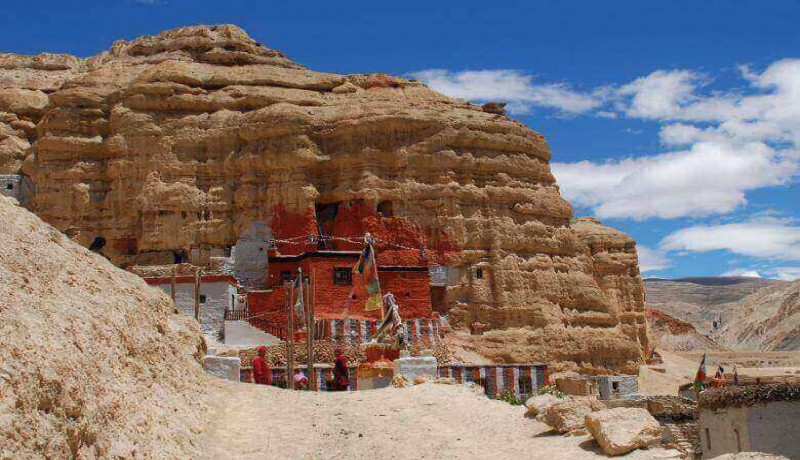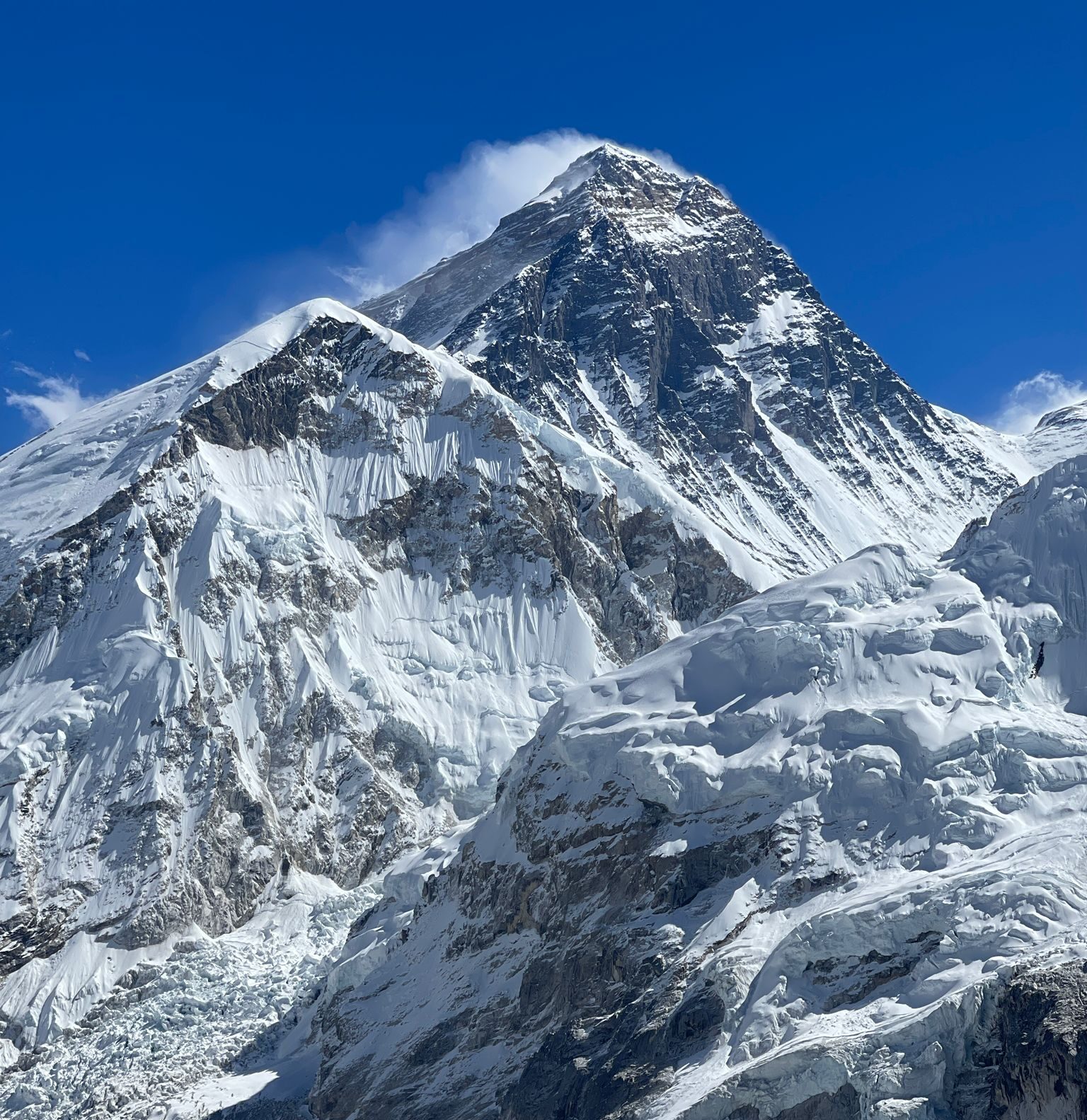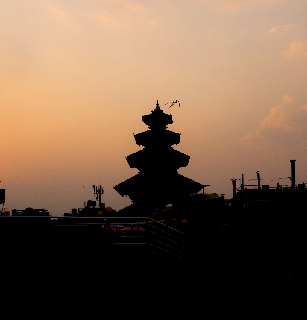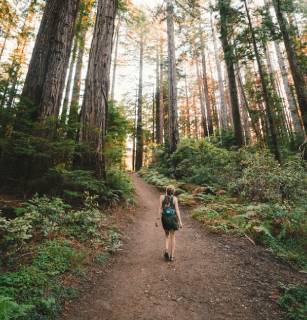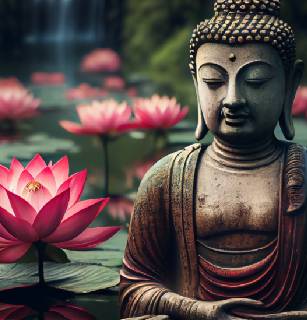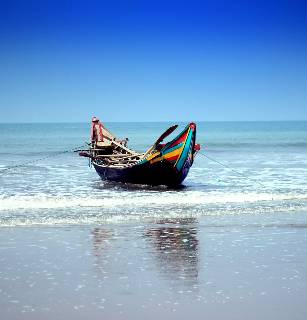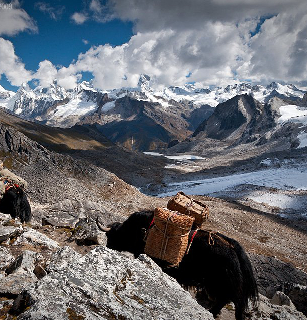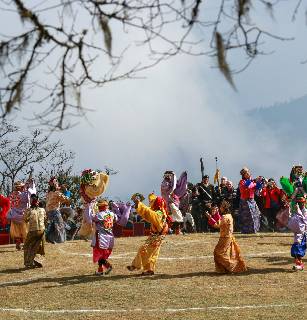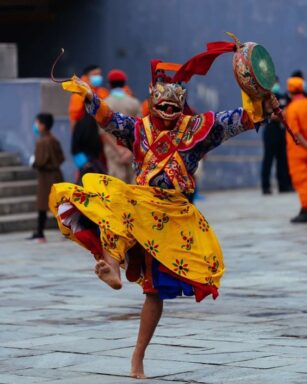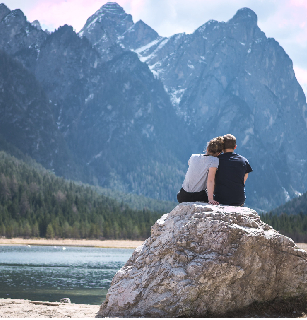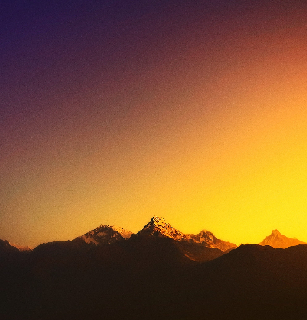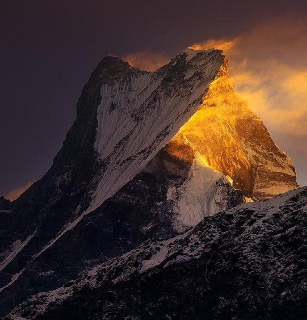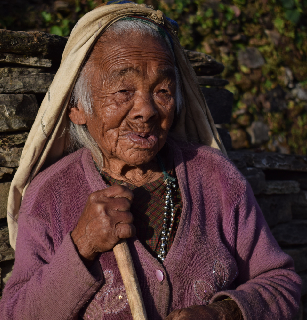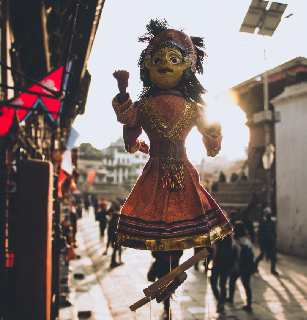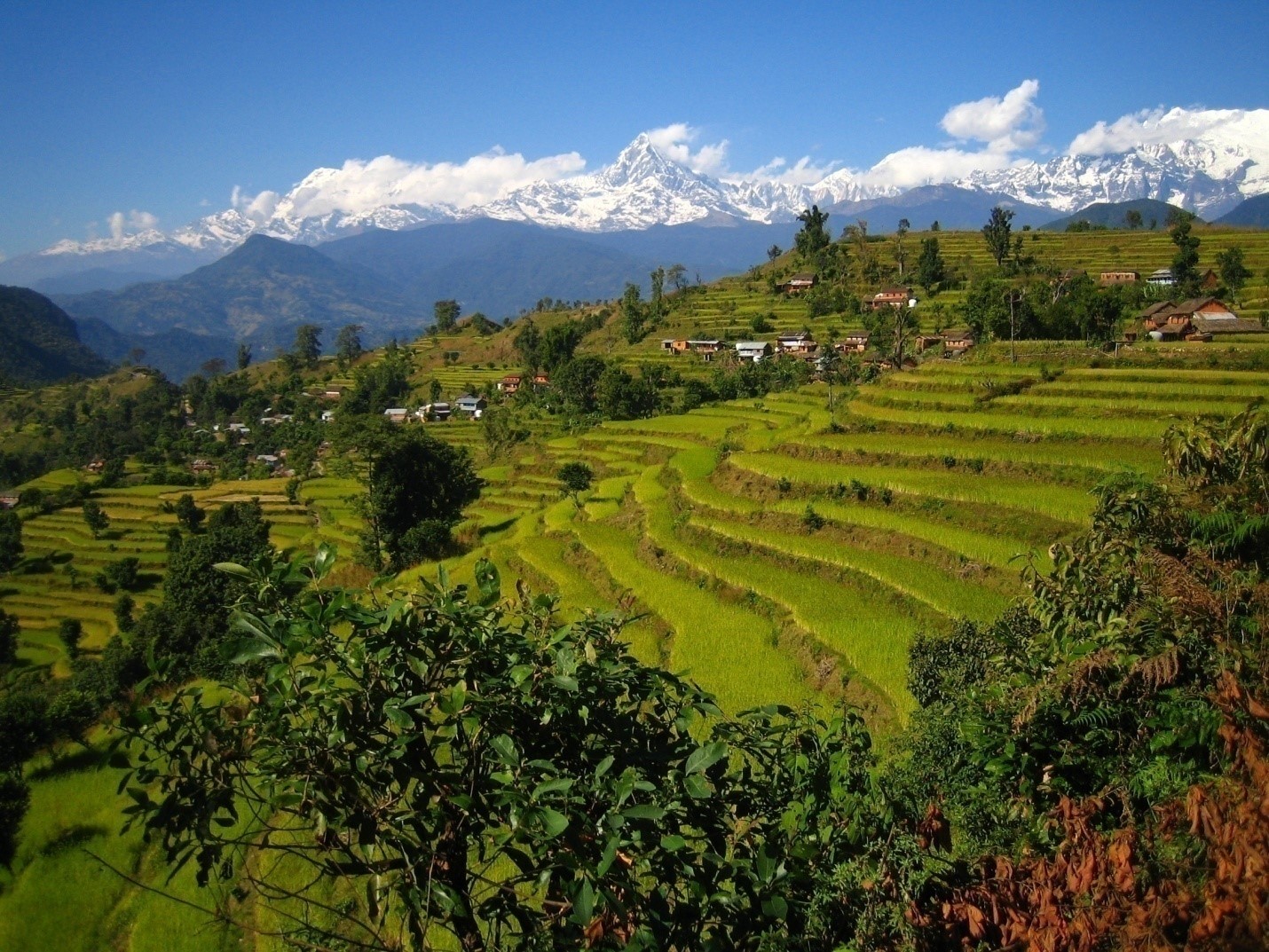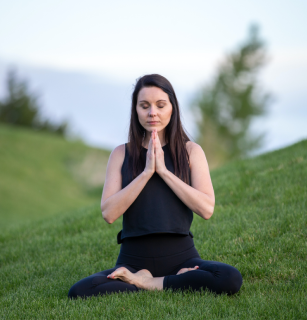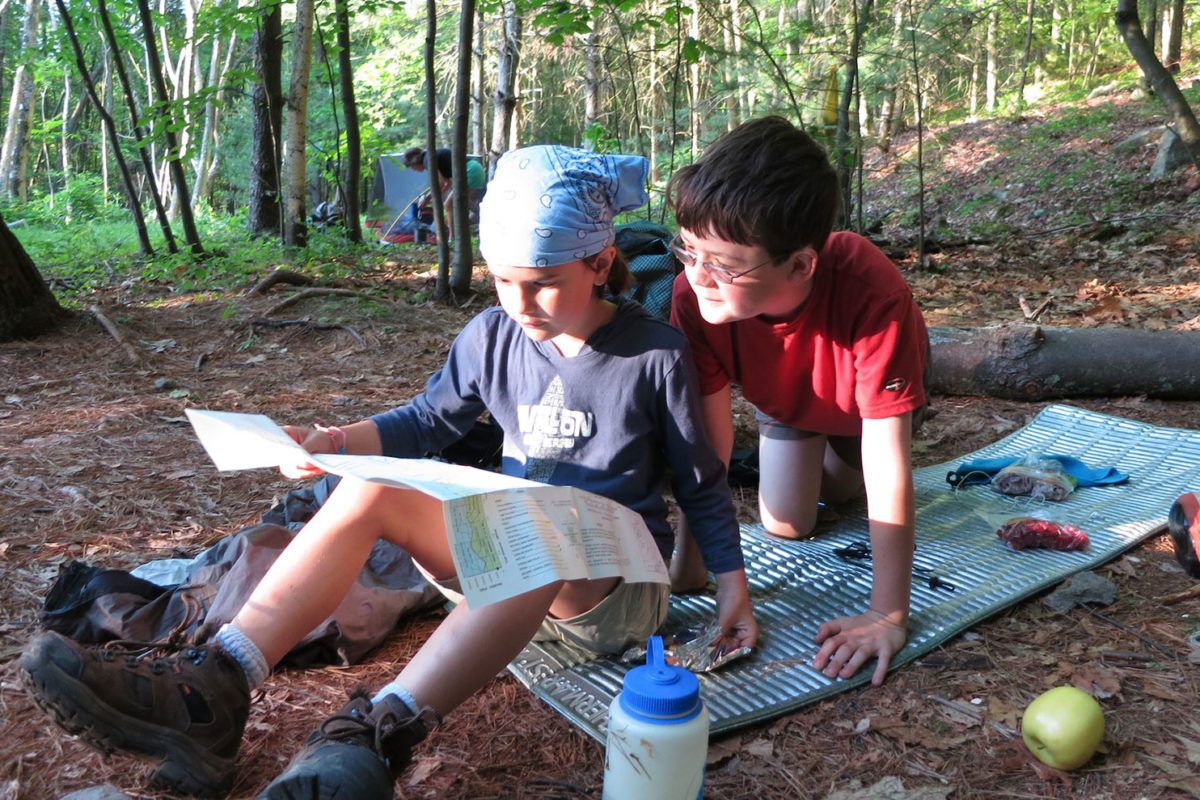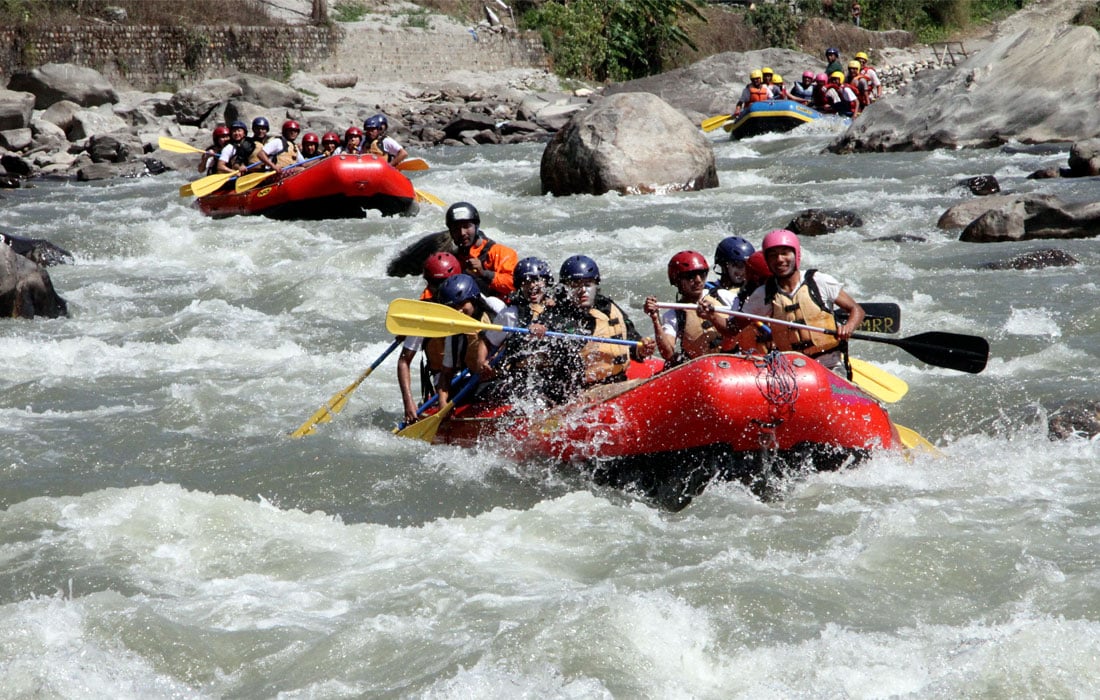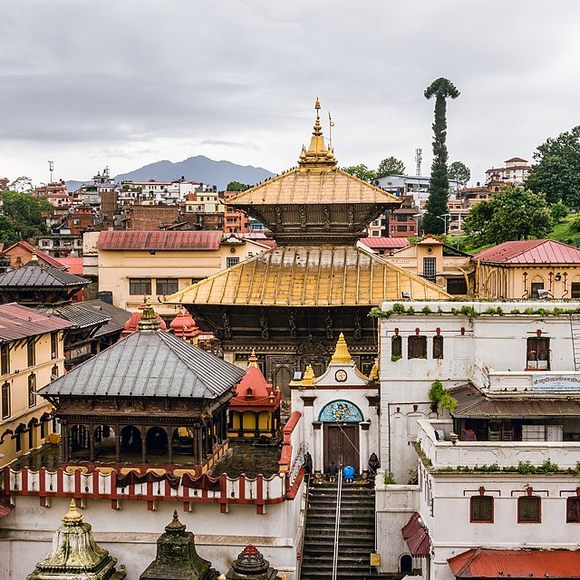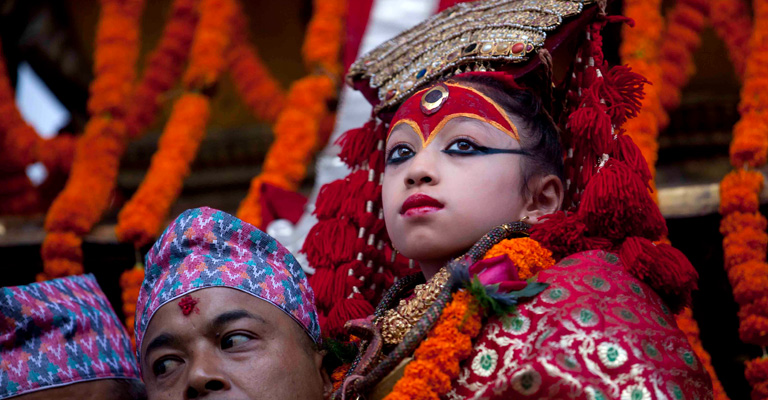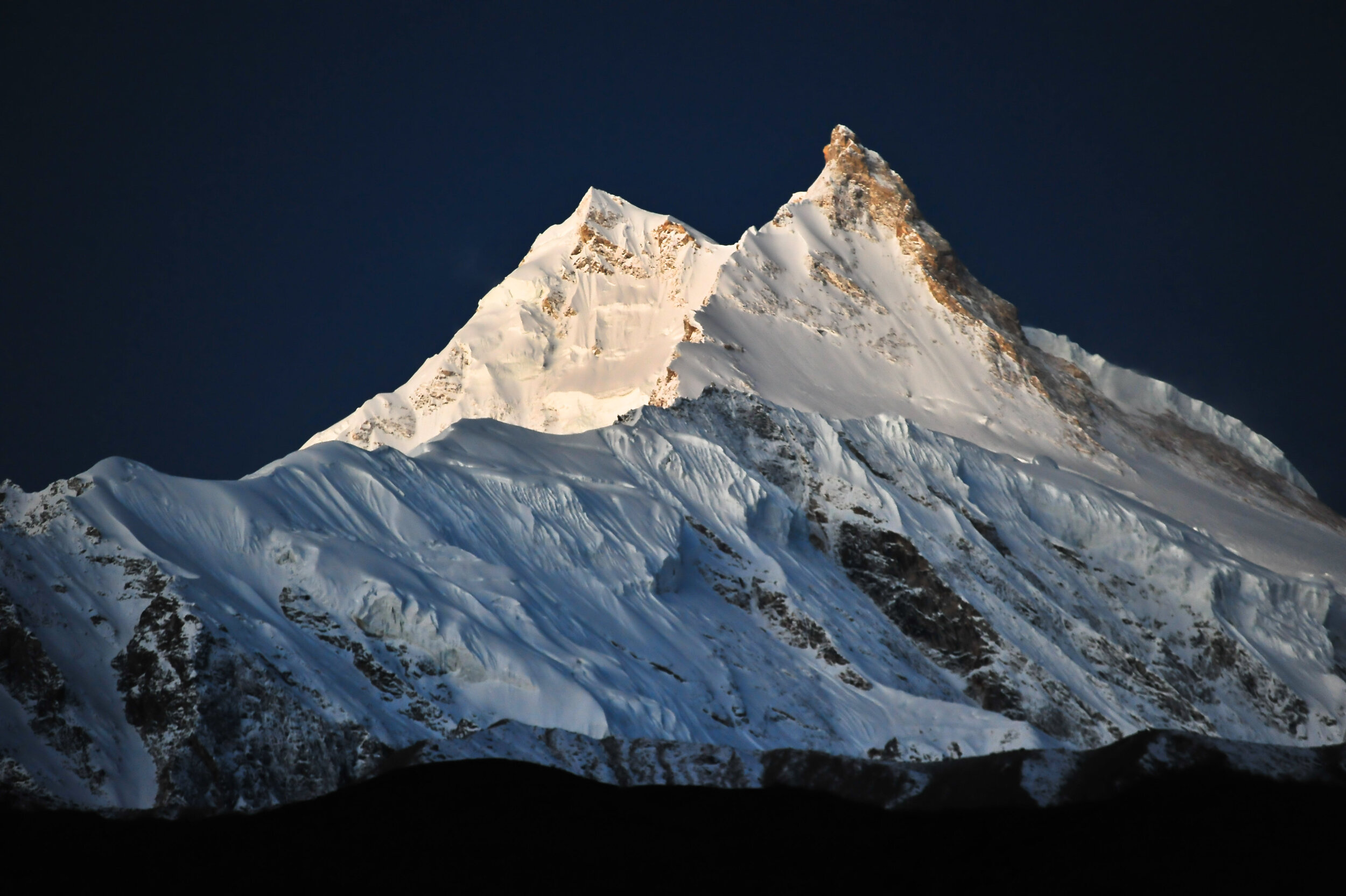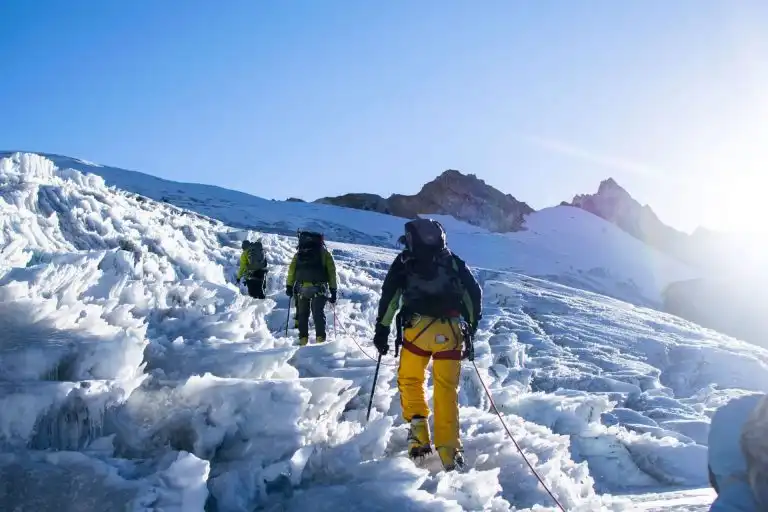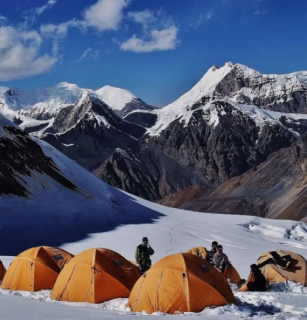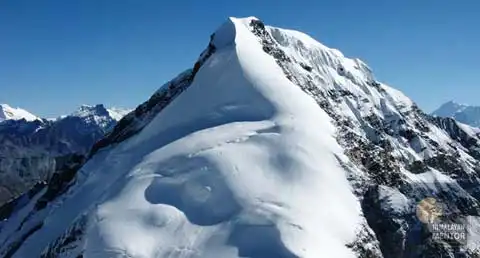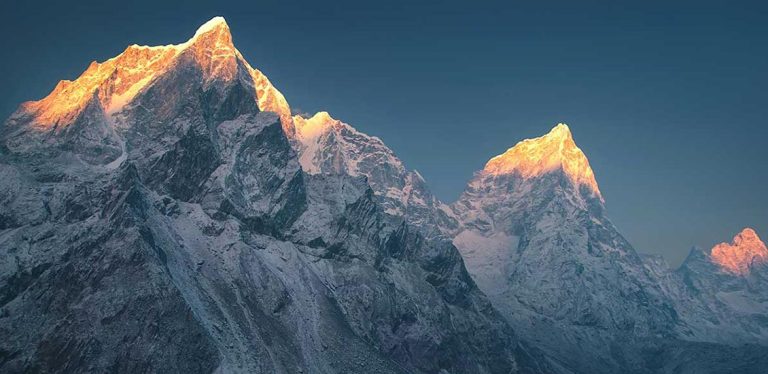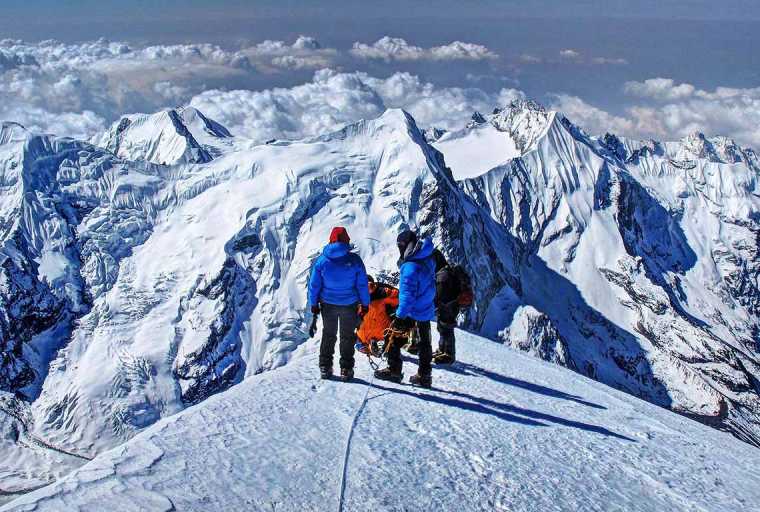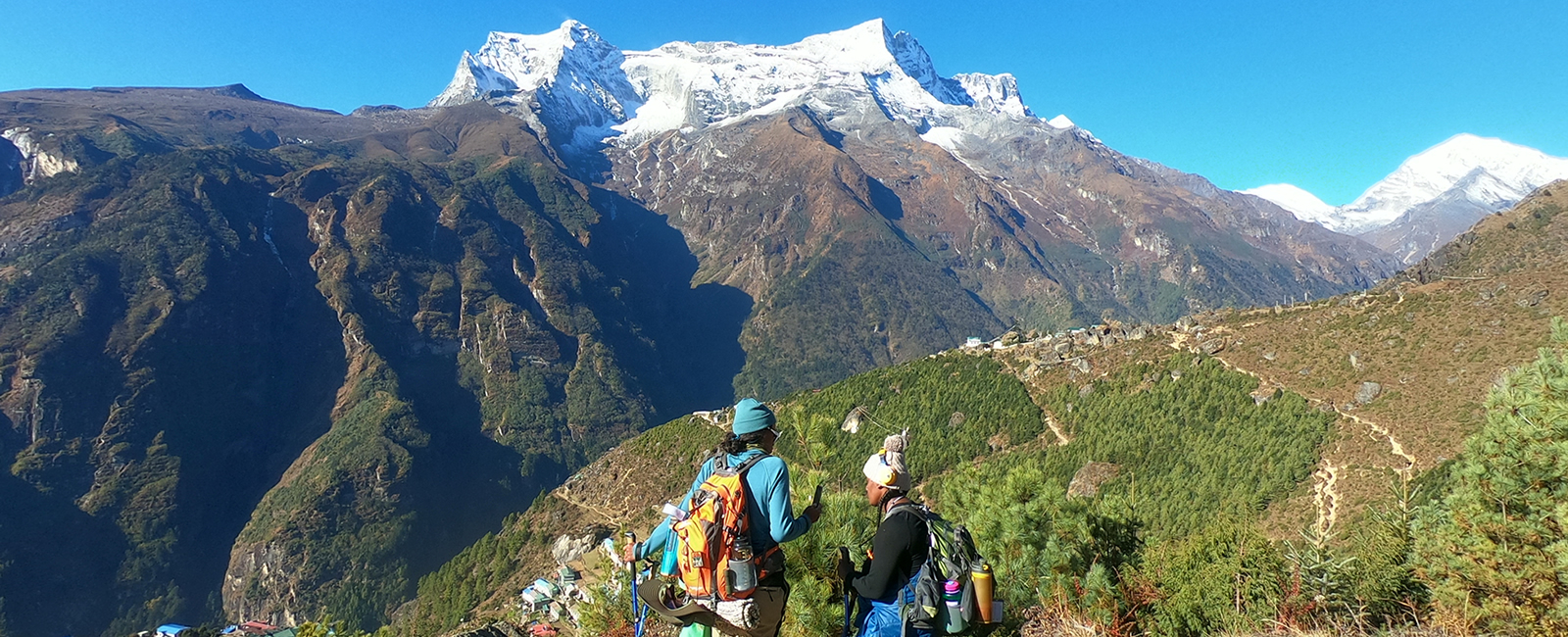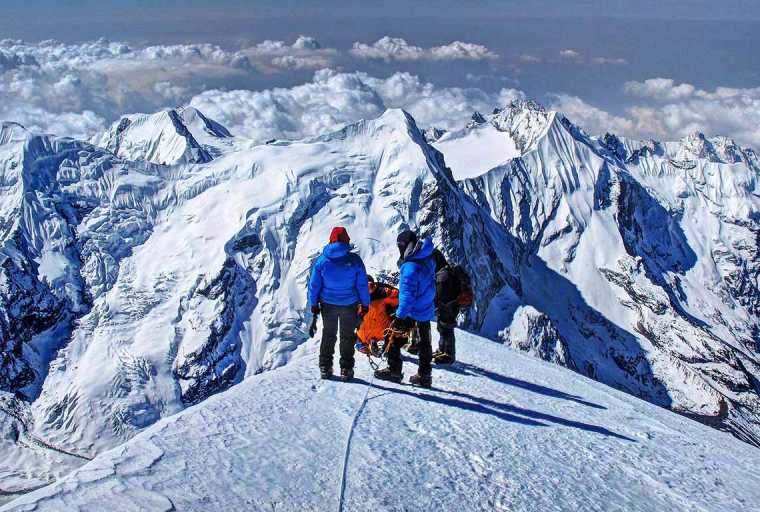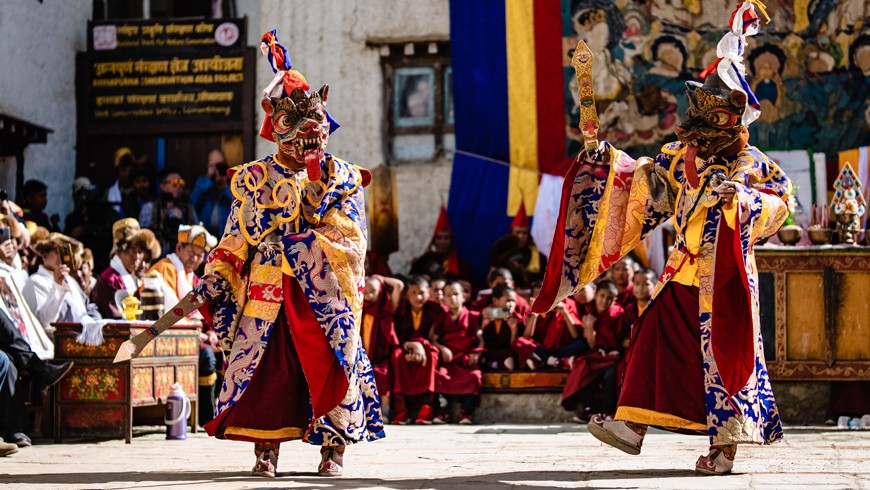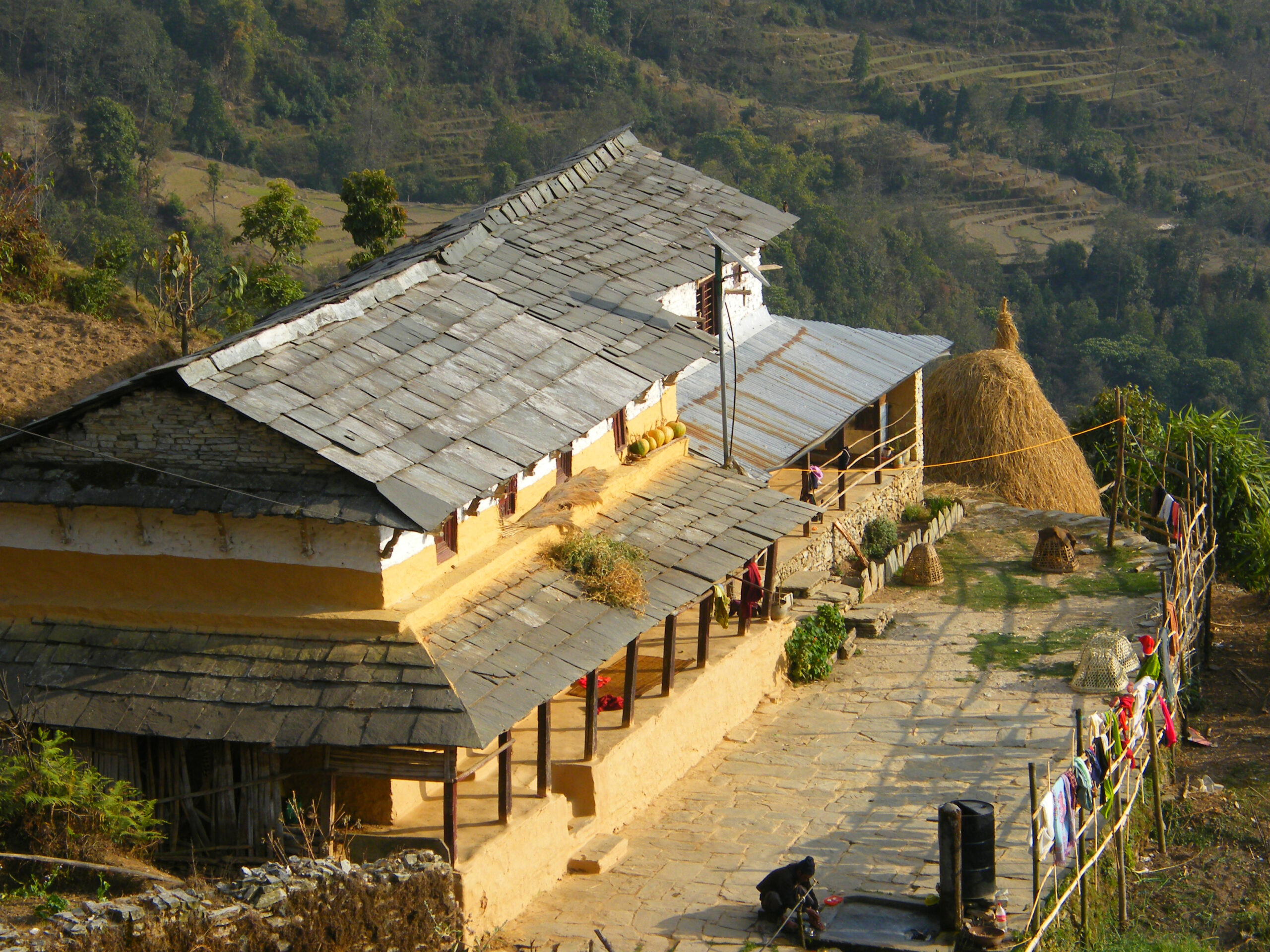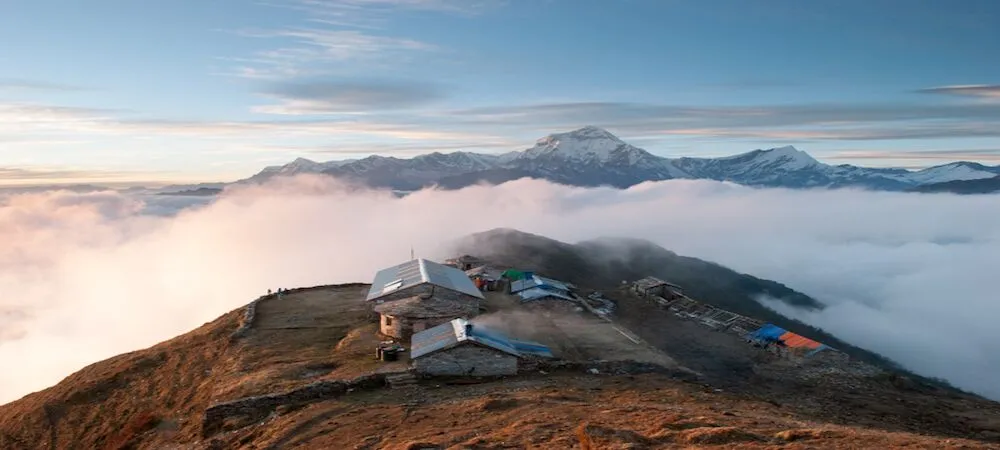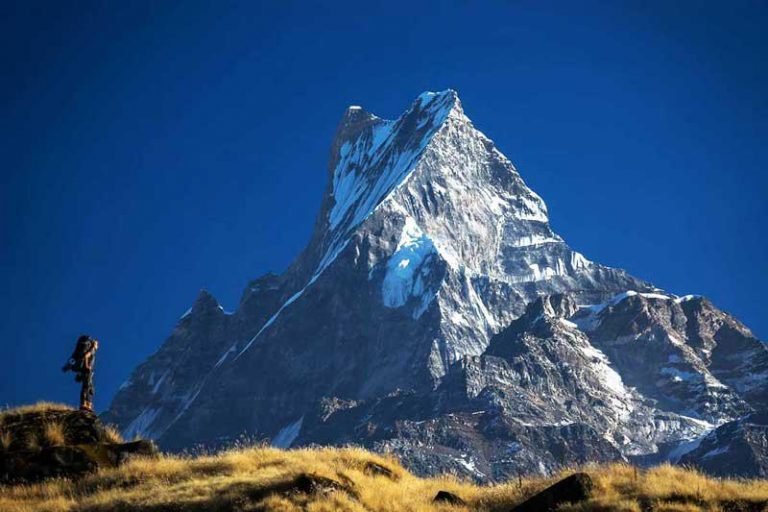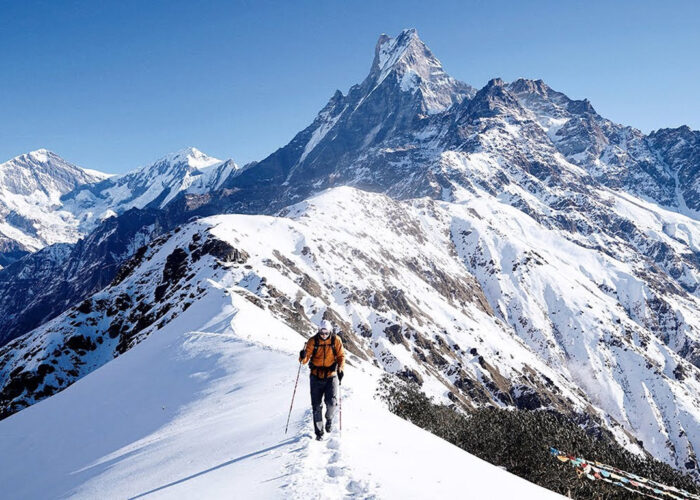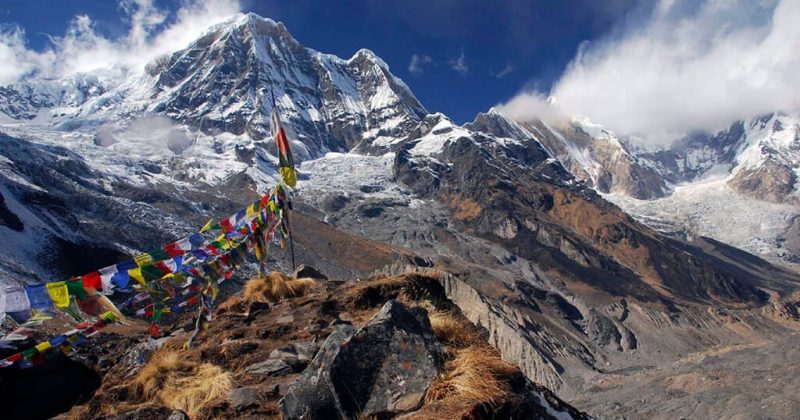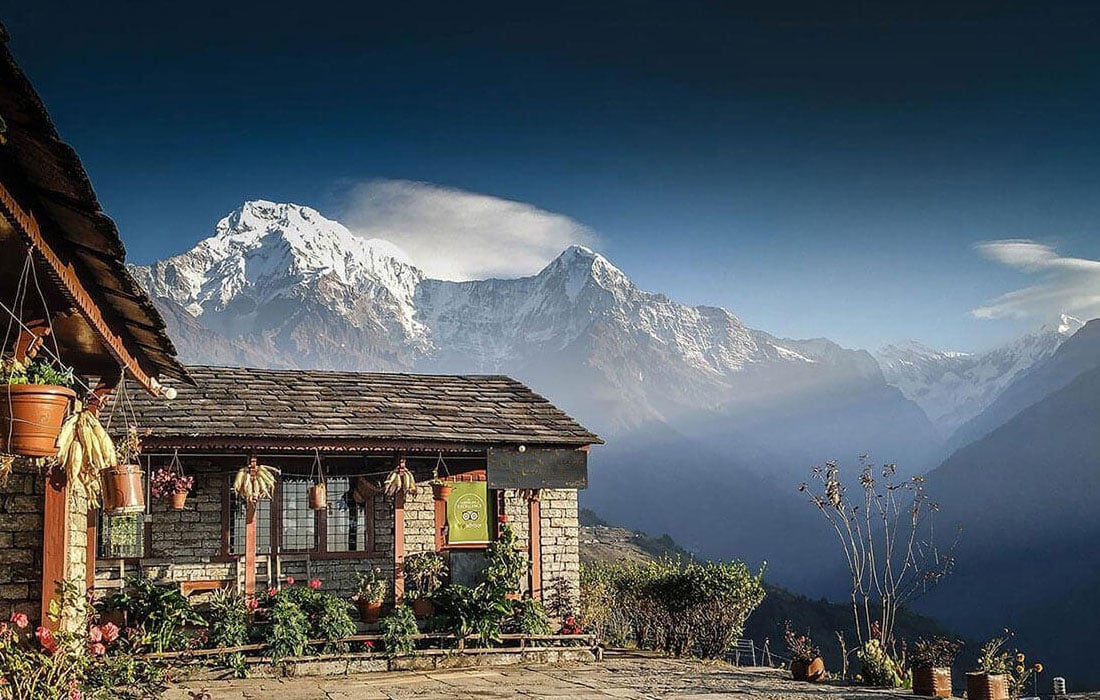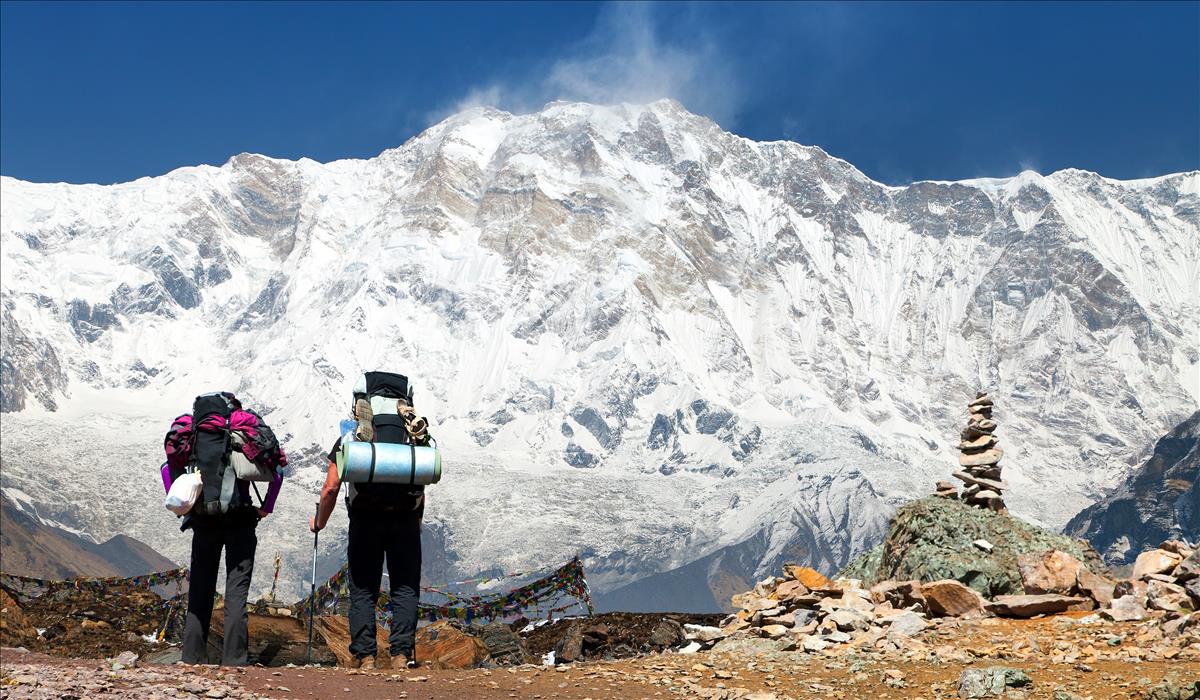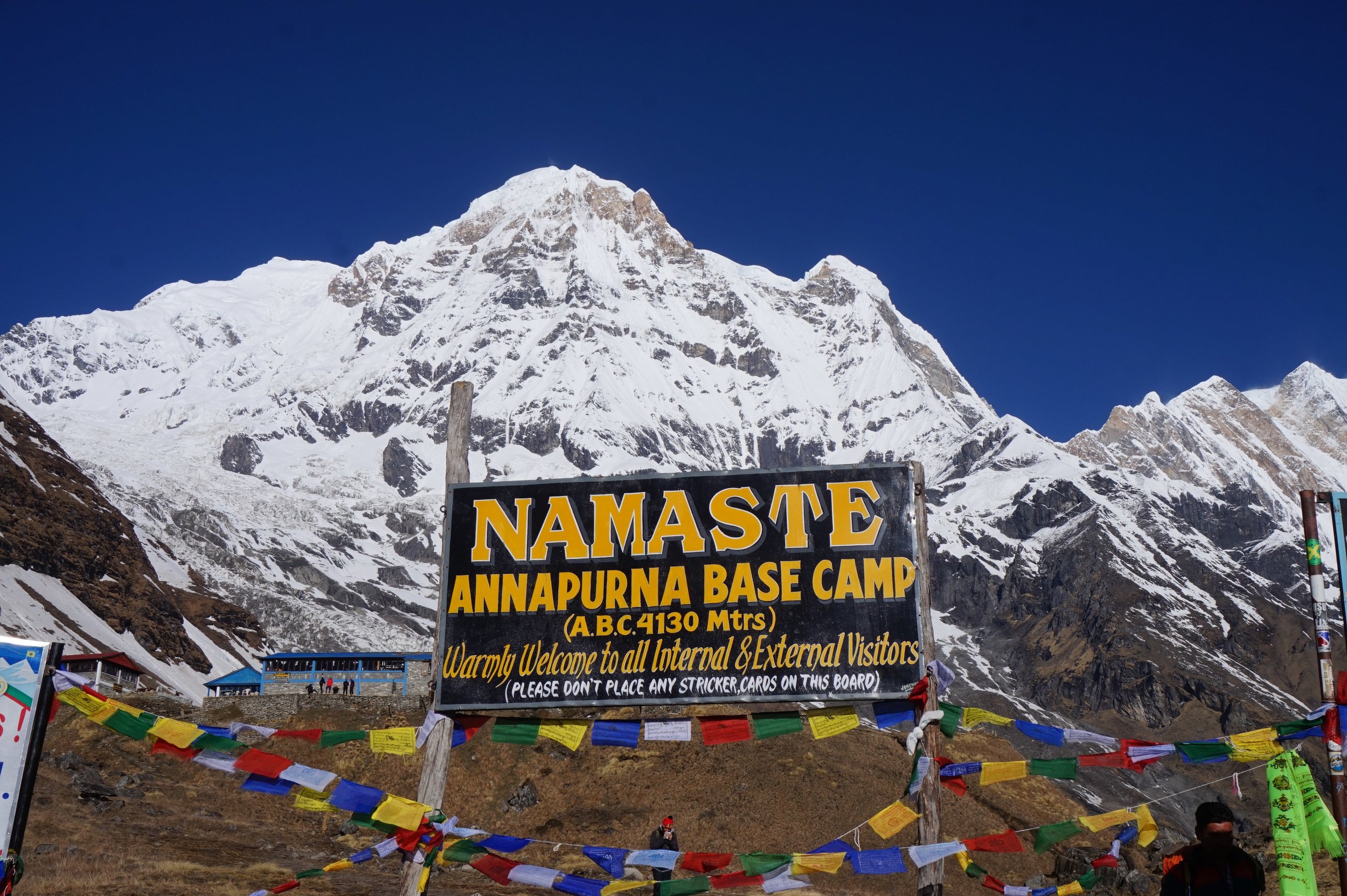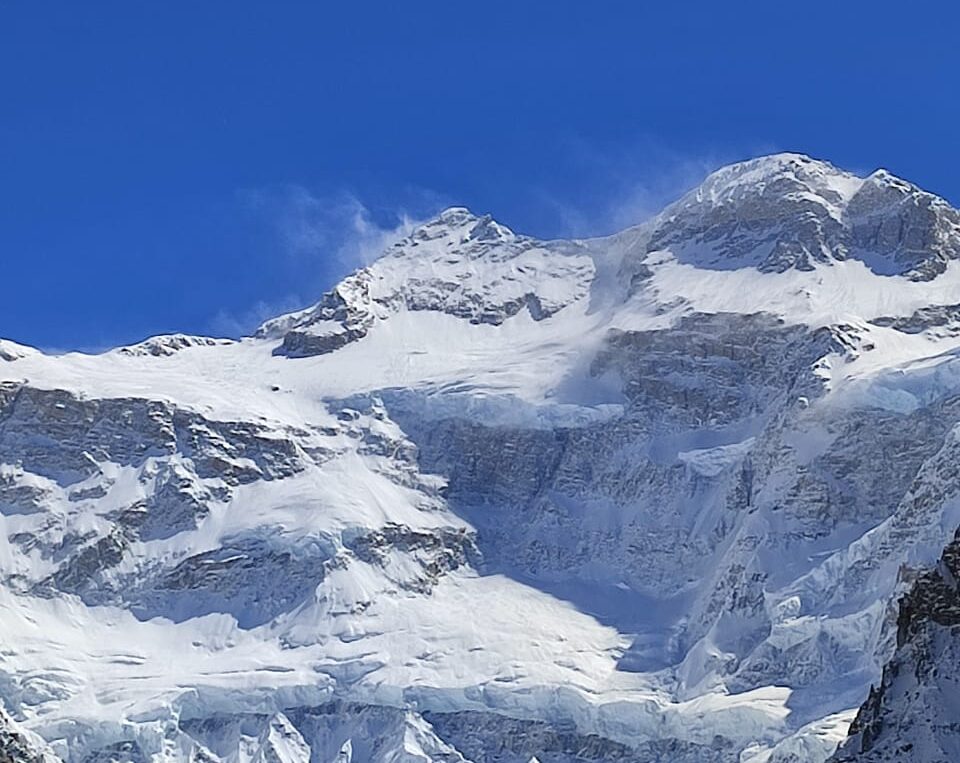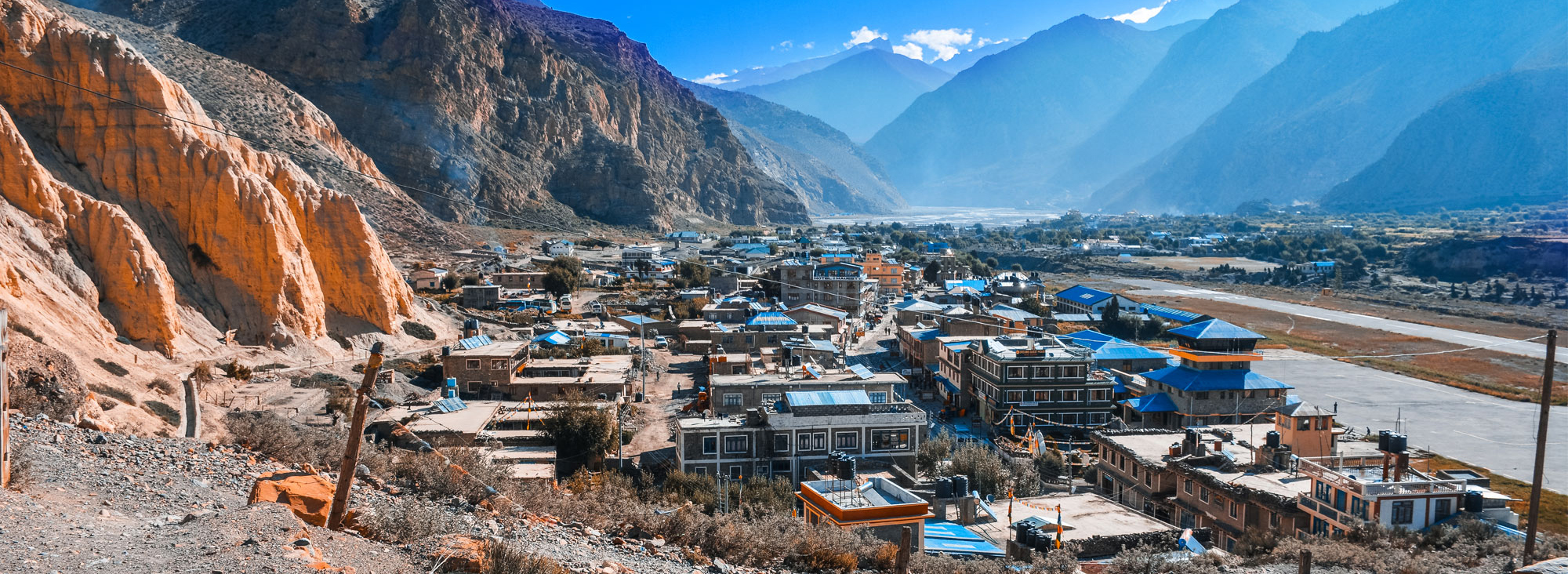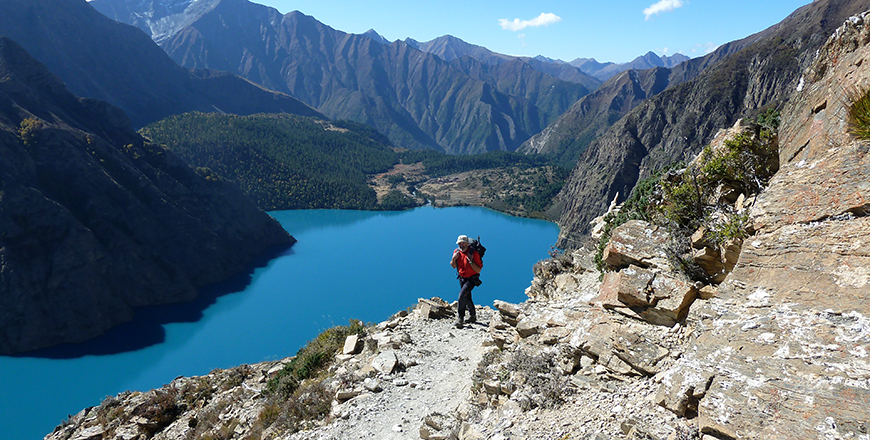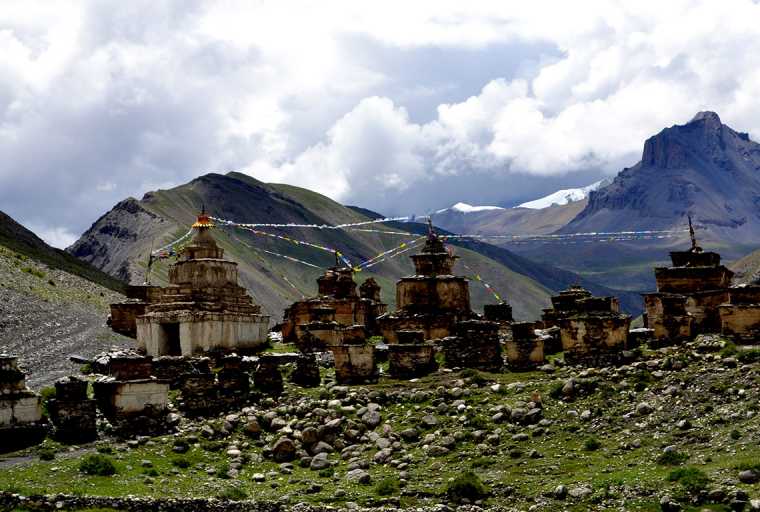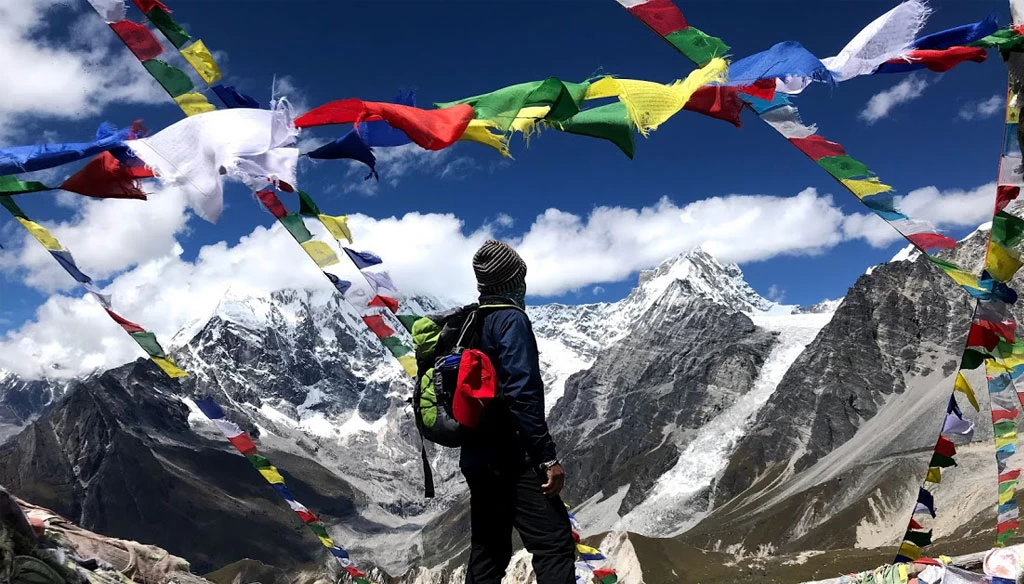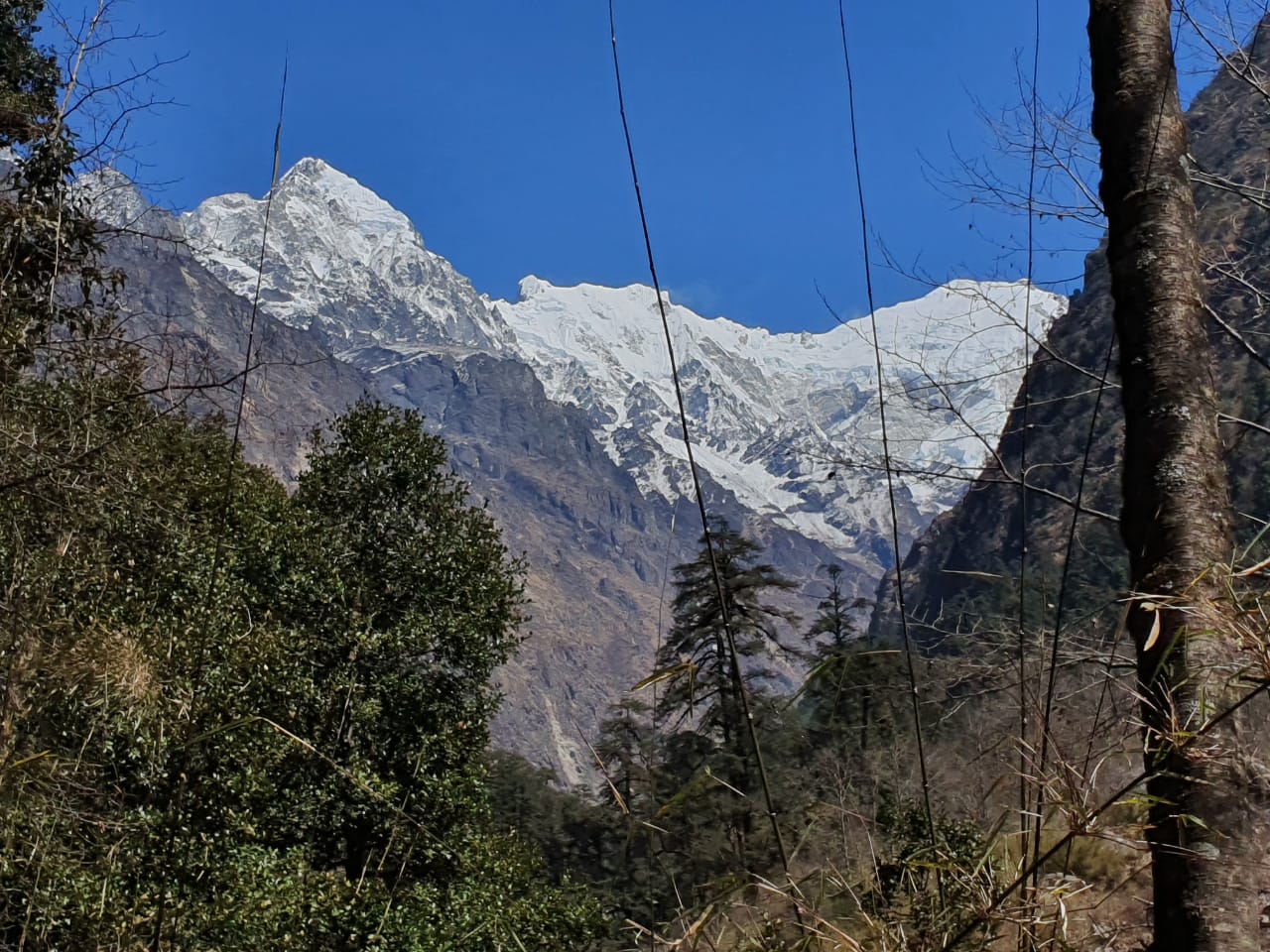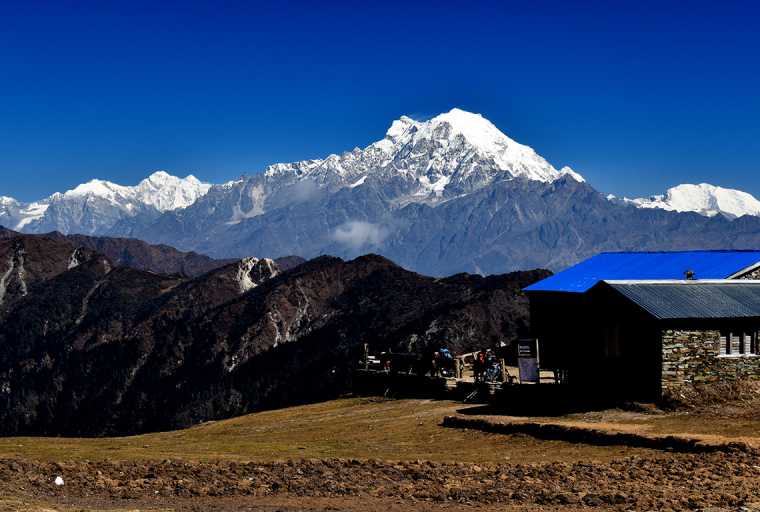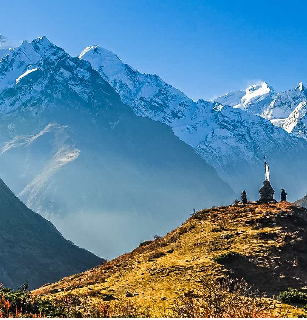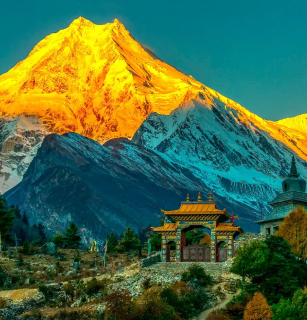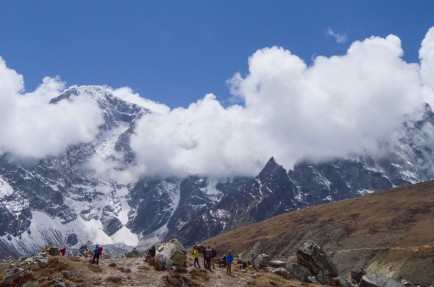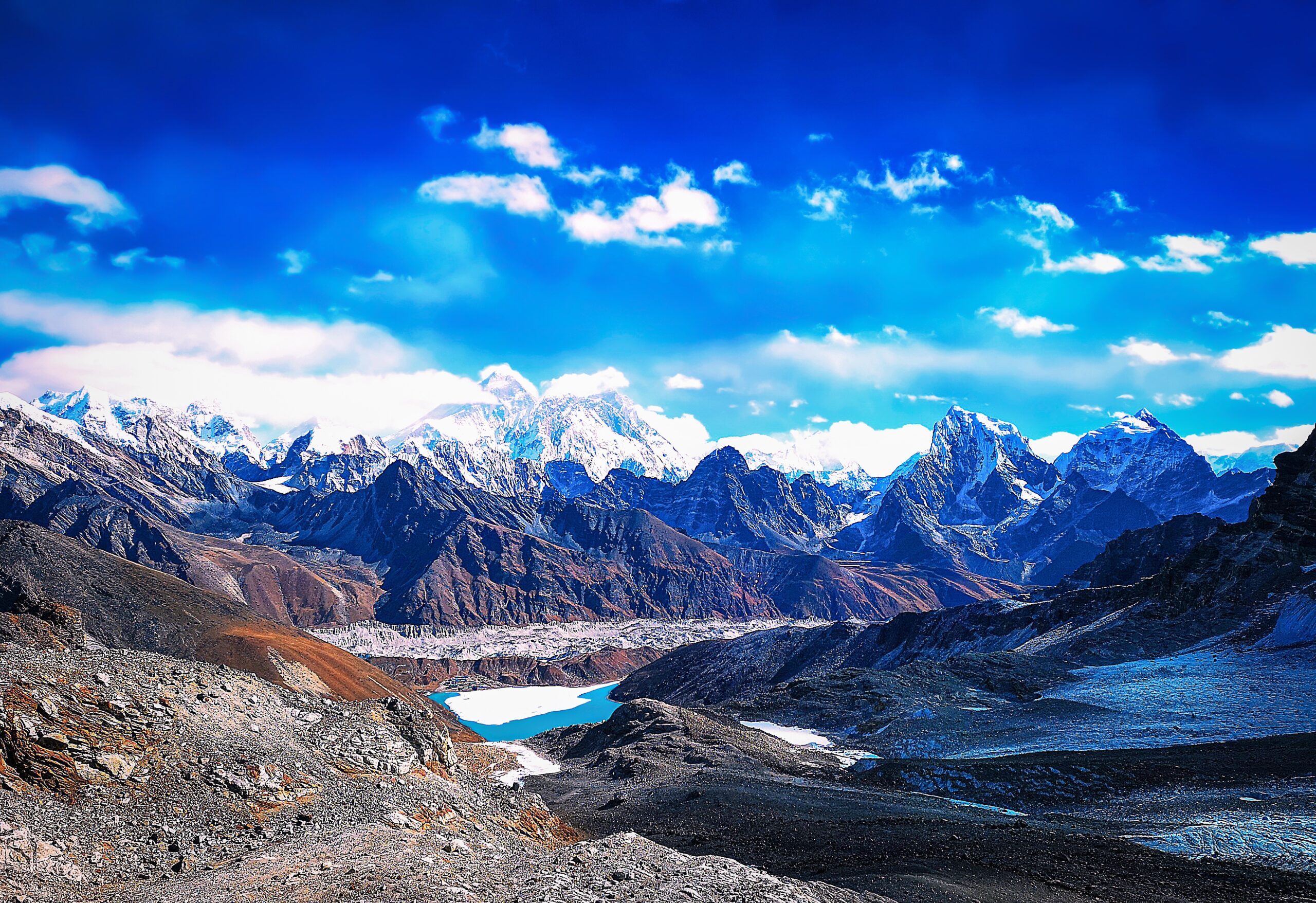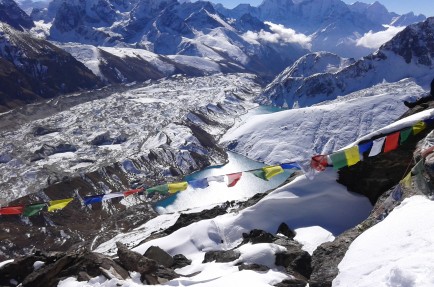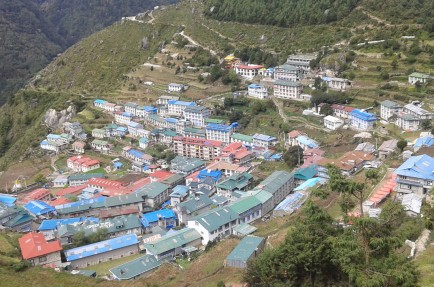5,430m/17,815ft
MAX-ALTITUDE3,810m/12,500ft
LOCATIONGROUP-SIZE
Minimum 02DIFFICULTY
ModerateIt is the home of the present king – Jigme Parbal Bista. The Honorary title “Bist – a high caste title in Nepali” was conferred by the King of Nepal. Though his duties are largely ceremonial, he is respected by the people and consulted about many issues by villagers throughout Lo Despite the apparent squalour of Lo Manthang, the city is prosperous and maintains a strong sense of community.
This is a restricted area. Foreign visitors have been allowed to the region since 1992, but tourism to Upper Mustang is gegulated. Foreigners need to obtain a special permot to enter and cosing US$ 500.00 per person for first 10 days and additional US$ 50 per day for each additional days.
Mustang is rich in Buddhist culture similar to Tibetan People. So, it is an alternate way to experience the Tibetan culture and Landscape. Tiji Festival in Lo-Manthang is another attraction for tourist.
Arrival in Kathmandu.
Upon arrival in Katmandu’s Tribhuvan International Airport, meet, assist and transfer to hotel. After welcome refreshments and room check in the hotel, there will be a short briefing and orientation about the trek
Eve: Trip briefing followed by welcome dinner at Authentic Nepali restaurant with culture program.
Overnight at hotel.
Sightseeing & Special permit processing day.
After breakfast proceed for a sightseeing tour of Kathmandu City. It includes visit to the Hanuman Dhoka (Kathmandu Durbar Square) – an ancient durbar (palace) with its numerous old palaces, temples and pagodas, the Temple of Living Goddess “Kumari”, and the Kasthamandap Temple, which is believed to be constructed from the wood of a single tree from which Kathmandu derives its name.
In addition also visit the Boudhanath Stupa – an ancient colossal stupa and the center of Tibetan Buddhism in the world and the Pashupatinath Temple- the Temple of Lord Shiva situated on the bank of the holy Bagmati River.
Pm: After lunch drive up to the Swayambhunath Stupa situated atop a hill from where you could get a bird’s eye view of Kathmandu Valley. The Swayambhunath Stupa is also known as the “Monkey Temple”!!
Eve: Group farewell dinner at nice restaurant in Thamel.
Overnight at hotel.
Drive to Pokhara (827 m / 2,7122 ft.) – 200 km / 6 hrs.
Am: After breakfast check out from hotel and start scenic drive to Pokhara via Prithivi Highway en-route stop at Riverside Spring Resort for lunch.
Pm: After lunch in the river start 3 hrs, scenic drive to Pokhara – which is a picturesque valley (827m) lying on the laps of the mighty Annapurna Himalayan Range with numerous beautiful lakes and lush green surroundings.
Eve: Walk around the colorful lakeside bazaar and dine at a nice restaurant.
Overnight at hotel.
Fly to Jomsom & Start trek to Kagbeni. 3~4 hrs.
Early morning transfer to the Pokhara airport and fly Pokhara / Jomsom. Upon arrival in Jomsom (2713m. /8817 ft.), met by Sherpa Team and trek to Kagbeni – 2 ~ 3 hours. This is a short day to give enough time for acclimatization, hiring of porters and horses to make preparations for the trek ahead.
Overnight at Tea house lodge.
Trek to Chailey Village (3050 m). 6~7 hrs.
The trail is up the east bank of the Kali Gandaki River that climbs over many ridges as it heads north. Depending upon the rains we will use a combination of high trails and the riverbank routes. From here we can see the Gompa Kang and some caves on the west bank of the river. Unlike most Gompas in Upper Mustang, Gompa Kang is of the Nyingmapa sect. Along side the East bank is the village of of Tangbe at an elevation of 2930 m. Here are the trios of black, white and red chortens that typify Upper Mustang. The Nilgiri peak, which dominates the southern skyline at Kagbeni, continues to loom massively at the foot of the valley with its white washed houses, fields of barley, buckwheat, and wheat and apple orchards. The Chhuksang village (2920 m) is reached after 1½ hours and lies beyond Tangbe at the confluence of the Narshang and KaliGandaki. Up the Narshing river is the Gompa and the Tetang village. 6½ hours.
Overnight at Tea house lodge.
Trek to Tama Gaon (3770 m). 7~8 hrs.
The climb from the Chailey is up a steep spur to a cairn at 3130 m. From here there is view of the Gyagar village across a huge canyon. The climb continues along the side of the spectacular steep canyon to a pass at 3540 m.
The trails make a long gradual descend to some Chortens on a ridge and then further descend on a pleasant trail to Samar (3290 m) situated in a grove of poplar trees. From Samar climb to a ridge then descend into a large gorge past a Chorten painted in red, black, yellow and white. The trails continues into another valley filled with juniper trees, crosses a stream and then climbs yet another pass and continues to Syangmochen village at 3710 m. Climb gently from Syangmoche to a pass at 3770 m and enter another east west valley.
Overnight at Tea house lodge.
Trek to Tsarang (3560 m). 7~8 hrs.
The path slips through dunes and creeps through narrow passages and ghostly labyrinths, going down to Ghiling, which is a scattered over vast fields of barley in the pitiless wind. From Ghiling to Tsarang there are ruins scattered everywhere; castles, houses and temples, there are two passes to be crossed namely Nyi La Pass (3950 m) and another at 3600 m.
Descend to Tsarang at 3520 m. It is a maze fields willow trees and houses separated by stonewalls. The huge 5 storied White Dzong and Red Gompa is perched on the east end of the village. The Gompa houses a collection of statues and thankas as well as many large paintings of seated Buddhas.
Overnight Tea house lodge.
Trek to Lo-Manthang (3780 m). 4 hrs.
The trail descends about 100 m and crosses the Tsarang Chu and climbs steeply up a rocky trail on ridge opposite the village at 3580 m and enters the Tholung valley. Turn north and climb gently to an isolated chorten and marks the boundary between Tsarang and Lo. Still climbing, the trail crosses a stream then becomes a grand wide thoroughfare traveling across a desert like landscape, painted in every hue of grey and yellow. Finally from a ridge at 3850 m, there is a view of the walled city of Lo. A short descent leads on to the plain of aspiration at 3780 m. After crossing a stream, climb up onto the plateau of Lo-manthang. The whitewashed walls around Lomanthang are shaped like a misshapen with a short vertical arm oriented north south and a very fat, almost square horizontal arm.
Overnight camp at Lo-Manthang.
Explore around Lo-Manthang (3780 m
The major Temples inside the walls are Champa Lakhang (God House) which houses the massive 45 ft. statue of Maitreva, the future Buddha, The red Thugchen Gompawith several large images of Sakyamuni, Avolokitesvara and Maitreya, and the The Chyodi Gompa of the Sakya sect which has several monks in residence and is the site of the annual Mani Rimdu festival in many which is referred as ‘tegi’ in Lomanthang. They are all supposed to have been built in 1420. Despite the apparent squalour of Lo Manthang, the city is prosperous and maintains a strong sense of community. Though the people call themselves Lobas- people from Lo, they are very much Tibetan and practice a sophisticated culture and economy. The King’s palace is an imposing 4 storey building in the center of city. It is the home of the Ex present king – Jigme Parbal Bista. The Honorary title “Bista– a high caste title in Nepali” was conferred by the King of Nepal. Though his duties are largely ceremonial, he is respected by the people and consulted about many issues by villagers throughout Lo. Horses are available on hire to visit the neighboring village.
However, everyone is required to mount and dismount outside the city gates as only King may ride a horse within the city walls.
Overnight at Tea house lodge.
Explore Chonup Chosar.
There are two valleys above Lo Manthang. A day hike to the North of Lo (Garphu/Nyphu) is Worthwhile. There are some interesting cave, monasteries in Garphu and Nyphu and numerous caves with dwellings inside them. On the way back, hike up-to the ruins of Ketcher Dzong for wide panoramic views of the valleys to the North and South.
Horses are available for hire in Lo Manthang and it is possible to make a circuit to the villages in the East and West valleys (Chonup Chosar) in a single day. Starting from Lo, begin towards to the North-West, visiting the village of Tingkhar – the site of the summer palace, Kimling and Phuwa as well as the Namgyal Gompa – the monasteries of victory, is in the west. We also visit Namdol before crossing the pass to Chosar (east valley, the site of the high school, and then head down to Garphu and Nyapu Gompas. This is the main trading route to Lhasa. It was used over the centuries by pilgrims, apostles, robbers and invaders and along the trail lies numerous fort ruins.
Overnight at Camp.
Drive to Shyangbochen and Trek to Samar Village.
After breakfast board into the local jeep and drive to Shyangbochen. After lunch in start trek to Samar.
Overnight at Tea house lodge.
Trek to Chukksang Village and drive to Jomsom.
After start short hike to Chukksang village about an hour and board the waiting local jeep and continue drive to Jomsom.
Upon arrival in Jomsom check in at a lodge for refreshment.
Eve: Sherpa Farewell dinner.
Overnight at Teahouse lodge.
Fly to Pokhara & Sightseeing tour.
After an early breakfast walk to Jomsom Airport to board 20 minutes flight to Pokhara. Upon arrival in Pokhara transfer to hotel for refreshment and rest. Later on proceed for a sightseeing tour of Pokhara. The tour includes the visit of Bindabasini Temple, the Seti Gorge, Davis Fall, Gopteswor Mahadev Cave. After sightseeing tour transfer to lakeside for lunch. Rest of the day is free for shopping and personal activities.
Eve: Sunset boat ride at Phewa Lake.
Overnight at hotel.
Fly to Kathmandu and Sightseeing tour.
After breakfast transfer to Pokhara domestic Airport, to board the 25 minute flight to Kathmandu. Upon arrival in meet assist and transfer to hotel. Rest of the day is free for rest and relaxation. You may go for a walk to Thamel for last minute shopping and spend a relaxing time in the hotel.
Eve: Group farewell dinner at nice restaurant in Thamel.
Overnight at hotel.
Final departure from Nepal
Check out from the hotel and meet Himalayan Holidays representative and transfer to Kathmandu Tribhuvan International Airport, Kathmandu for final departure.
Got any question or Inquiries about the trip ?
In the morning after breakfast go for a walk and later return for lunch. After lunch the guest are free to rest.
Cost Includes
- All arrival/departure transfers, drives in a private vehicle with a/c accompanied by an English speaking tour representative/escort from Himalayan Holidays.
- Two night’s stay at hotel (As above) in Kathmandu on twin / double room sharing basis with bed, breakfast and all applicable taxes.
- Three night’s stay at hotel (As above) in Pokhara on twin / double room sharing basis with bed, breakfast and all applicable taxes.
- 09 nights /10 Days “The Upper Mustang Trek” inclusive of all meals (breakfast, lunch and dinner), accommodation in best available Teahouses/Trekkers Lodges, services of trained, trusted and highly experience trek Guides & Sherpa assistants including a team of strong and reliable porters.
- Annapurna Conservation Area Project (ACAP) fees.
- Mustang Restricted Area fees US$ 500 per person..
- All meals as listed on the above Itinerary.
- Drive on the trek in a local public jeep
Cost Excludes
- International airfares and airport departure taxes.
- Nepal entry visa fees.
- Items of a personal nature such as bar bills, mineral water, telephone calls, laundry, mineral water, extra mileage and any extra costs incurred due to natural calamities, flight delays etc.
- Airfare for sector Pokhara / Kathmandu (Quoted Separately)
- Airfare for sector Pokhara / Jomsom / Pokhara (Quoted Separetely)
- Supplement cost for Russian Guide. (Quoted Separetely)
- Additional expenses due to illness, hospitalization, travel medicines, loss of valuables, thefts, change of Itinerary, flight and tour cancellation.
- Any kind of insurance.
- Emergency Helicopter Charter for Evacuation.
- Items not specified in the above in “costs include column”.
Availability
Book this trip with us from the following dates. For Custom Trips or general inquiries, Contact Us.
Departure Date
Availability
Action
Dec 07 (Thursday)
49 Slots left
Dec 08 (Friday)
20 Slots left
Dec 09 (Saturday)
50 Slots left
Dec 10 (Sunday)
100 Slots left
Dec 11 (Monday)
200 Slots left
Nepal visa is easily issued from Nepalese Embassy in your country. Nepal also issue on arrival visa for 15 days, 30 days and 90 days charging fee of USD 25, USD 40 and USD 100 respectively. Please carry two passport size photos along with you.
Best season for trekking in Nepal is from March to May and September to November. During this time weather is clear and warm. But, if you like to avoid crowd then best time for your trek will be from May to September.
Yes, we do provide international airport pick up and drop off services. Outside terminal, our staff will be displaying companies play card or your name card depending upon group size, for your convenience.
It is compulsory to have your insurance before you visit Nepal. For trekking and Alpine Climbing you must have High Altitude Insurance. And for Tour and sightseeing you must have travel insurance.
You must be physically fit and healthy for trekking in Nepal. It’s better to do at least 2 hours morning or evening walk to prepare yourself for this trekking.Please let us know in advance if you have any medical problems like heart disease, asthma and blood pressure.
Difficulty level depends upon the remoteness and altitude of the trekking route. Basically, trekking below 3,000m is easy. Higher the altitude, it’s more difficult to walk.
In trekking, wide variety of food is available. Teahouses prepare Nepali food, Indian food and Continental food as per menu. All the foods are freshly prepared. We suggest you not to consume meat items during the trekking.
Basically, we accommodate our clients in 3 to 4 star hotel in Kathmandu, Pokhara, Chitwan and other major cities in standard rooms on twin sharing basis. For luxury package we accommodate you in 5 star and beautiful boutique hotels in available places. On trek we accommodate you in best available lodges and teahouses standard rooms on twin sharing basis and occasionally dormitory on busy season.
In teahouse trekking basic facilities are available, with clean rooms, blankets, freshly cooked warm food. Sometimes there will be common toilets and bathrooms outside your room. Warm water is available for shower on extra cost.
In camping trekking, we will use the tents that can keep us warm from -20 degree Celsius to -40 degree Celsius. Tents for toilet, shower, dinning and kitchen will be set up for your convenience. Comfortable trekking chairs, tables and mattress will be available. Fresh and healthy food will be prepared by our professional cook.
Means of transportation depends on places you travel. We have our own fleet of transportation like car, jeep, Hiace and Coaster tourist bus for ground transfer. Domestic airplane and helicopter are used for air transportation.
Weather in the Mountains is highly unpredictable. So we should always be prepared to tackle the cold. From March to May and September to November in the morning and evening temperature will be (from 3000m to 6000m) 0 degree Celsius to 5 degree Celsius, in afternoon it will rise upto 20 degree Celsius to 25 degree Celsius and at night it might fall down till -5 degree Celsius to -10 degree Celsius. Similarly, during winter i.e. December, January and February there will be heavy snowfall in the Mountains dropping temperature till -15 degree Celsius at night. Morning and evening will be around -5 to 5 degree Celsius and temperature will rise upto 15 degree Celsius during day time. And our monsoon season from June to August where we expect heavy and continuous rainfall. But if we go above 3000m altitude ratio of rainfall will decrease. Temperature during day will reach upto 25 degree Celsius high and reduce till 0 degree Celsius to -5 degree Celsius. Morning and evening will be chill from 5 degree Celsius to 15 degree Celsius.
For trekking in the Mountains you will need very warm, windproof, waterproof clothes. You must bring trekking/hiking boot which is comfortable to wear and walk. Beside that quick dry t-shirt, trouser and towel is important.
On average you have to walk 6 to 8 hrs a day covering 12 to 18 km in distance.
Of course, this trip is completely safe for solo travelers. You will have your guide and porter for your assistance; they will definitely take care of you along the trip.
Health and safety of our clients is a major concern of our company. All our guides have got first aid training. Your guide will be carrying first aid kit and satellite phone during the trekking in case of emergency and we can use the helicopter service for immediate evacuation.
Yes, you can use your debit/credit card in major cities like Kathmandu and Pokhara. We suggest you to carry cash (Nepali Currency) during the trekking for your personal expenses.
If its Altitude Sickness problem then we will immediately carry you down to lower altitude. We will take you to the nearby health post and if the case is serious we will immediately do helicopter rescue and admit in major hospitals in Pokhara or Kathmandu.
We have included rest/spare day in your itinerary to acclimatize in the thin air. Your guide will encourage you to drink more soup and garlic which is believed to help in high altitude. Besides that, your guide will be carrying medicine (Diamox) to reduce altitude sickness.

